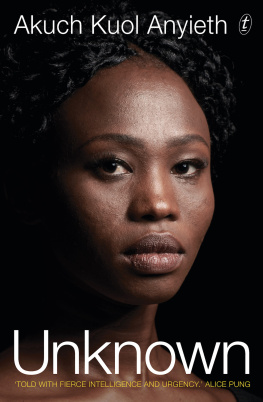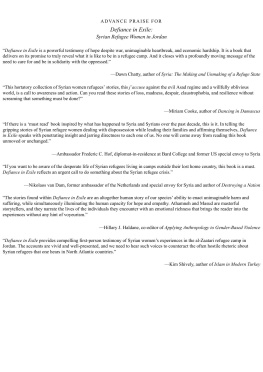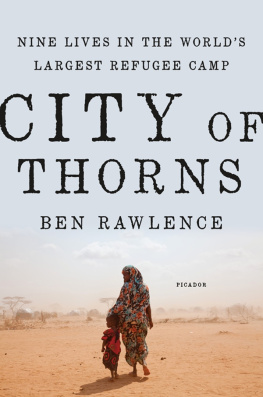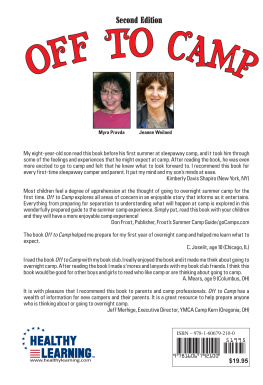Children of the Camp
CHILDREN OF THE CAMP
The Lives of Somali Youth Raised in Kakuma Refugee Camp, Kenya
Catherine-Lune Grayson

First published in 2017 by
Berghahn Books
www.berghahnbooks.com
2017, 2021 Catherine-Lune Grayson
First paperback edition published in 2021
All rights reserved.
Except for the quotation of short passages for the purposes of criticism and review, no part of this book may be reproduced in any form or by any means, electronic or mechanical, including photocopying, recording, or any information storage and retrieval system now known or to be invented, without written permission of the publisher.
Library of Congress Cataloging-in-Publication Data
A C.I.P. cataloging record is available from the Library of Congress
British Library Cataloguing in Publication Data
A catalogue record for this book is available from the British Library
ISBN 978-1-78533-631-7 (hardback)
ISBN 978-1-80073-179-0 (paperback)
ISBN 978-1-78533-632-4 (ebook)
To the children of Kakuma
CONTENTS
FIGURES
ACKNOWLEDGMENTS
Many people have made this book possible. Throughout my research, Deirdre Meintels support and responsiveness have been incredibly precious. I am thankful to my former colleague Maria Vargas Simojoki, who read my first draft and never failed to ask insightful and critical questions, while also making very sensitive observations about Somalis, Somalia and humanitarianism. Thanks as well to Randa Farah for her careful reading and her very valuable comments. The many and challenging discussions that I have had with displaced people and aid workers over the years have also greatly stimulated my reflection.
I wish to thank my father, who has paid patient attention to every single comma and, earlier on, made me realize that the history of my own family was probably not foreign to my interest in the experience of exile. Displacement does ring a fairly intimate bell. Sometimes in Kakuma, speaking with youth about the past of their family, I wondered why their stories were so fragmentary, until they would return the questions to me and I would realize how little I knew about my own familys path into exile.
All my appreciation goes to Hubert, who has not only been a wonderful and encouraging interlocutor, but has also cared for Simone so I could write. I am also immensely indebted to FilmAid, which provided me a lively home there. Wholehearted thanks to Dawn, Craig and Gwyneth for always receiving me so generously in their cozy Nairobi home. I would also like to express my gratitude to Vanier Canada for funding this research.
Above all, thank you to the residents of Kakuma who turned the camp into a hospitable place. Day after day, you welcomed me warmly into your homes. You offered me so many meals and conversations. I am incredibly grateful to all those who shared their time, thoughts and amazing stories with me, helped me navigate the camp and invited me into their lives. As you are not named in this book, I will not do so here.
ABBREVIATIONS
AMISOM | African Union Mission in Somalia |
BBC | British Broadcasting Corporation |
DRA | Department of Refugee Affairs |
EU | European Union |
ICU | Islamic Courts Union |
ID | Identity document |
IOM | International Organization for Migration |
JRS | Jesuit Refugee Services |
KSh | Kenyan shilling |
LWF | Lutheran World Federation |
NGO | Nongovernmental organization |
RCK | Refugee Consortium of Kenya |
SNM | Somali National Movement |
SPLA | Sudan Peoples Liberation Army |
SYL | Somali Youth League |
TFG | Transitional Federal Government |
UN | United Nations |
UNHCR | United Nations High Commissioner for Refugees |
USY | Union of Somali Youth |
WUSC | World University Service of Canada |
On January 1, 2013, US$1 was worth 84.5 Kenyan shillings. Unless otherwise specified, this is the exchange rate used in this book.
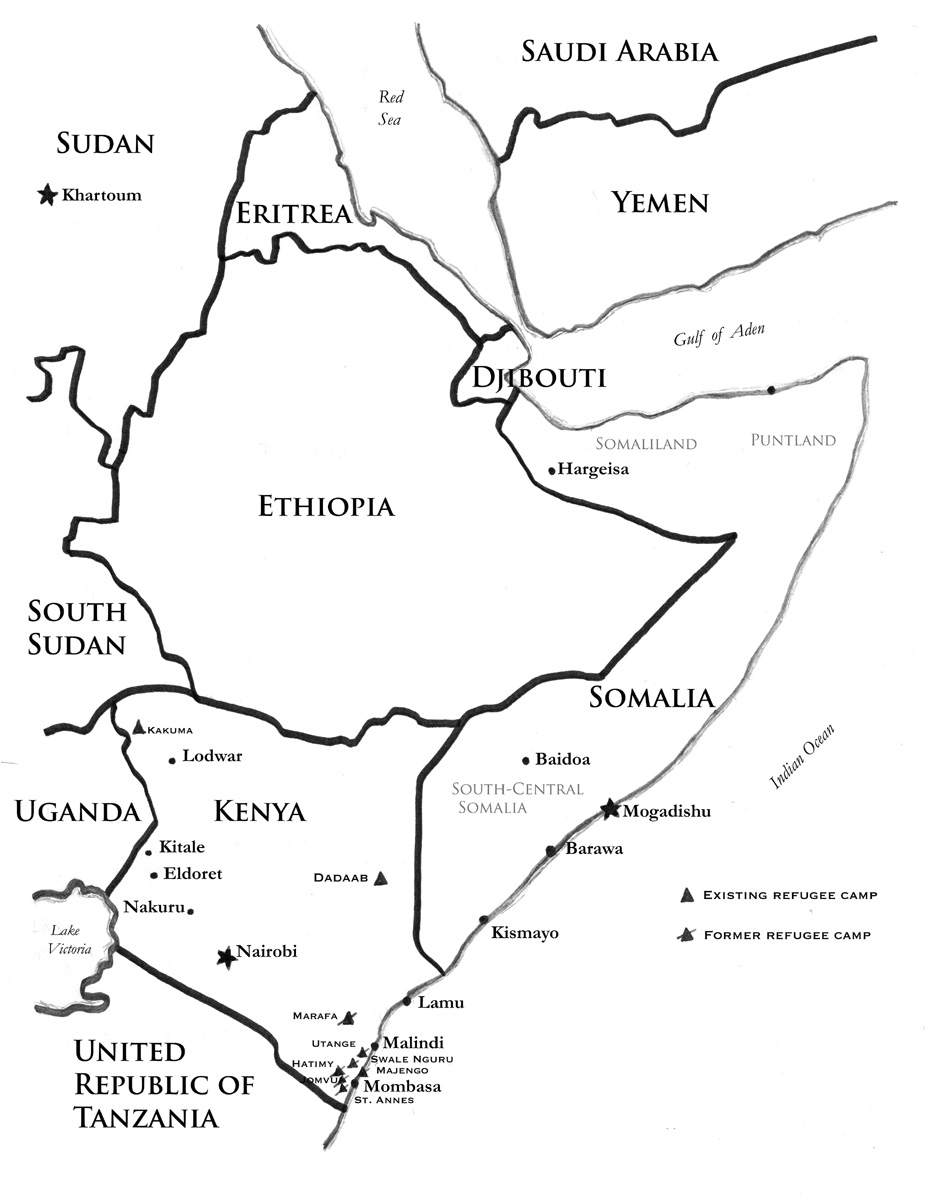
The Horn of Africa and Kenyan refugee camps.
Map adapted by the author from Map No 4188 (Horn of Africa) of the UN Department of Field Support and from Montclos 1999a: 29
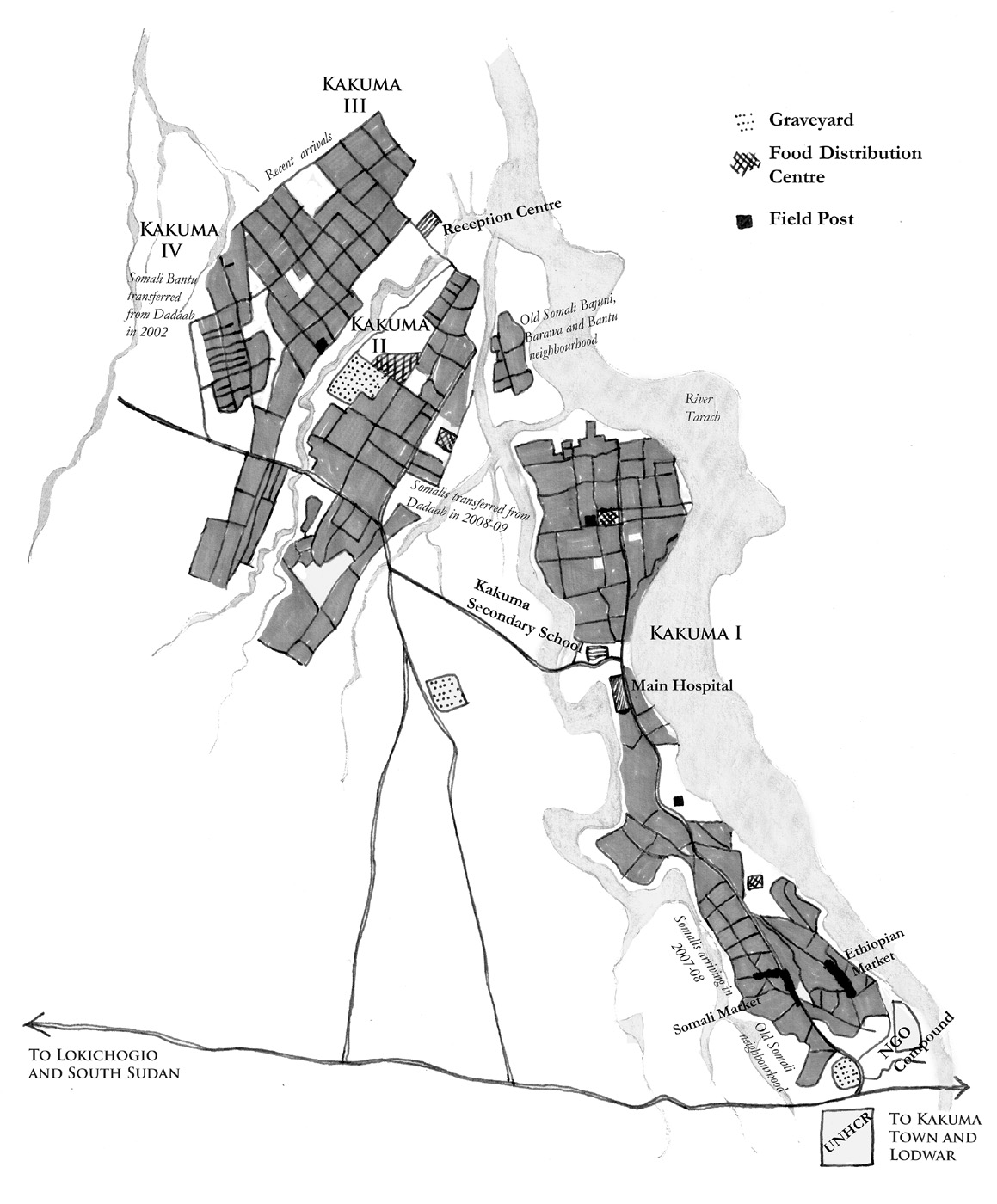
Kakuma refugee camp.
Map adapted by the author from Layout Map of Kakuma Refugee Camp, prepared by the UNHCR and National Council of Churches of Kenya, February 2012
INTRODUCTION

The year was 2010, and I was spending time in Dagahaley, one of the Dadaab refugee camps in northeastern Kenya, to conduct some research for Mdecins sans frontires. That is how I came to meet one of the organizations medical assistants, a twenty-year-old Somali who started talking about the recent birth of his first child. He said it had reinforced his desire to find a way out of the camp, a place that felt like an open-air jail. He did not want his son to be like him, someone who knows only life in the camp. He explained that he was born in Dagahaley and had never even been to the town of Dadaab, just a few kilometers away. Some days later, the program manager of a nongovernmental organization (NGO) mentioned that at least 10,000 children had been born in the camp to parents who were also born there.
I gradually came to realize that a whole generation of exiled Somalis had been born and raised in the Dadaab camps, and that they were now young adults. I should have become aware of this long before, given that the camps had existed for more than twenty years and that I had been working in such settings for many years. Nevertheless, this was the first time I had grasped this fact of their lives. I started reflecting on their experience. Few nations have been so massively displaced for so long. Palestinians, Afghans and the Sahrawi come to mind. I was used to hearing refugees talking about how things were back home before they fled. But these young people, unlike their parents, had no recollections of Somalia, no other experience to compare their current conditions with. Yet, their community had certainly told them many stories about their homeland. So I wondered how they imagined the land of their parents, how they experienced the camp and how they imagined their future, given all the constraints imposed by camp life and exile.
My questioning quickly became intertwined with interrogations about how and why camps have become such a usual response to mass displacement, given their unsuitability. Very strong criticisms of camps as a long-term solution have been leveled not only by academics but also by the United Nations agency specifically mandated to protect and assist refugees, the United Nations High Commissioner for Refugees (UNHCR). It has been repeatedly noted that camps are far from being ideal places for the development and fulfillment of individuals. As early as 2004, the UNHCR stated that:
Next page


